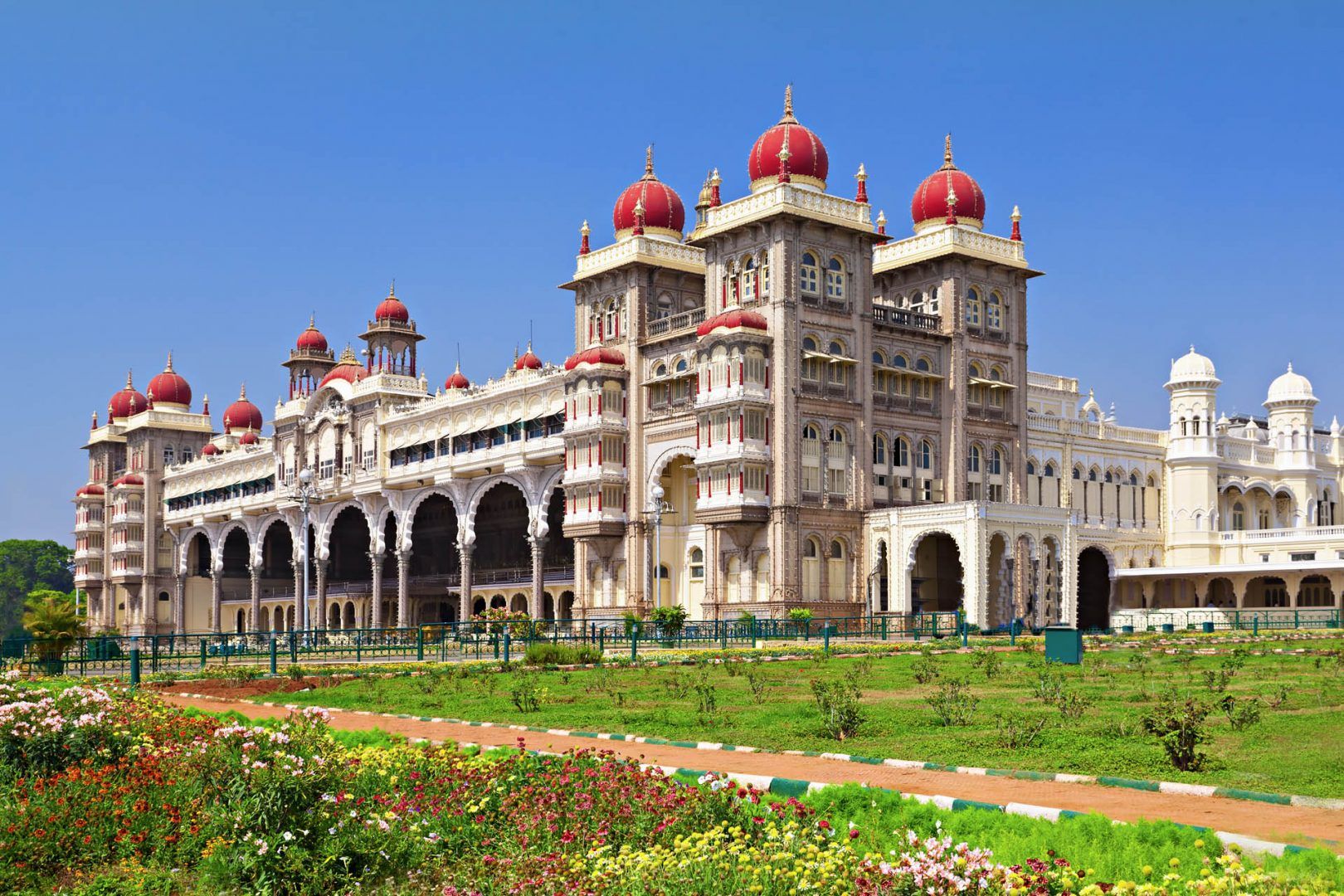Mysore, a city steeped in history and culture, stands as a jewel in the southern Indian state of Karnataka. Renowned for its majestic palaces, vibrant festivals, and rich heritage, Mysore has earned the moniker “Cultural Capital of Karnataka.” The city’s royal past, exemplified by the Wodeyar dynasty, has left an indelible mark on its architecture, traditions, and way of life.
At the heart of Mysore’s allure is the resplendent Mysore Palace, a masterpiece of Indo-Saracenic architecture. This grand palace, also known as the Amba Vilas Palace, was the residence of the Wodeyar rulers and continues to be a symbol of the city’s regal heritage. The palace, with its intricately carved arches, domes, and vibrant stained glass, is a visual spectacle that captivates visitors. The illuminated Mysore Palace during the annual Dasara festival is a breathtaking sight, attracting tourists from across the globe.
Adjacent to the palace is the sprawling Jaganmohan Palace, an art gallery that houses an extensive collection of paintings by renowned artists like Raja Ravi Varma. The gallery offers a journey through the evolution of Indian art, showcasing traditional Mysore paintings, Tanjore art, and European oil paintings.
Mysore is also synonymous with the revered Chamundi Hill, home to the Chamundeshwari Temple. Perched atop the hill, the temple is dedicated to the goddess Chamundeshwari, a form of the Hindu goddess Durga. The climb to the top is rewarded with panoramic views of Mysore city and the surrounding landscape. The Nandi Bull statue at the temple’s entrance is a colossal sculpture that adds to the spiritual and visual richness of the site.
The vibrant and bustling Devaraja Market is a microcosm of Mysore’s cultural fabric. Located in the heart of the city, the market is a sensory delight with its aromatic spices, colorful silk sarees, fresh flowers, and traditional Mysore Pak sweets. The market is not only a place for commerce but also an immersion into the local way of life, offering a glimpse of Mysore’s traditional crafts and culinary delights.
Mysore is also known for its silk industry, and the Government Silk Weaving Factory is a testament to the city’s expertise in silk production. Visitors can witness the intricate process of silk weaving, from the dyeing of threads to the creation of exquisite Mysore silk sarees, known for their fine texture and vibrant colors.
The city’s educational prominence is underscored by the presence of the University of Mysore, one of the oldest universities in India. Established in 1916, the university has played a pivotal role in shaping the intellectual landscape of the region.
Mysore Dasara, the city’s most celebrated festival, is a 10-day extravaganza that commemorates the victory of Goddess Chamundeshwari over the demon Mahishasura. The grandeur of the Dasara celebrations is marked by a majestic procession, showcasing the city’s rich cultural heritage with caparisoned elephants, folk dancers, and traditional music. The illuminated Mysore Palace, adorned with thousands of lights, becomes the focal point of the festivities, creating a magical atmosphere that draws locals and tourists alike.
The Brindavan Gardens, located just outside the city, add another layer to Mysore’s charm. Created along the banks of the Kaveri River, these gardens are a symphony of colorful fountains, musical lights, and meticulously landscaped greenery. The gardens provide a tranquil setting for visitors to relax and enjoy the natural beauty that surrounds Mysore.
In conclusion, Mysore is a city that seamlessly weaves together its regal past, vibrant traditions, and modern aspirations. Its palaces, temples, and festivals reflect a rich tapestry of history and culture that continues to resonate with visitors. Mysore’s ability to blend tradition with progress, coupled with its warm hospitality, makes it a destination that leaves an enduring impression on all who explore its royal splendor.



